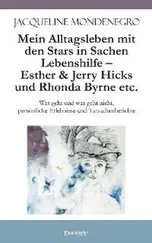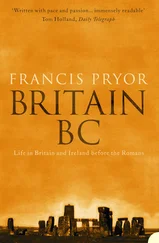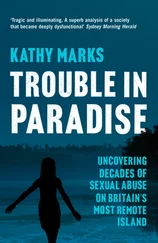As people moved from the countryside into rapidly expanding cities, so did dogs. The mysterious science of breeding travelled into town too, stolen rural magic to be peddled on urban streets.
Queen Victoria’s private vet, Charles Rotherham, told a parliamentary committee that the canine population had soared between 1865 and 1887 as the middle classes purchased pure-bred animals as domestic companions. As one breeder put it: ‘Nobody who is anybody can afford to be followed about by a mongrel dog.’
Inspired by the monarch herself, Victorian society demanded ever more exotic and spectacular pets. Doggie fads changed with the season: one year, the miniature schipperke was the must-have canine accessory because its short, black coat was less likely to leave unsightly hairs on the chaise longue. The lapdog was as much a part of a lady’s paraphernalia as bonnet and parasol, a fashion statement requiring replacement with each change in vogue.
Soon hundreds of thousands of dogs had infiltrated every part of city life, from the mollycoddled ‘toys’ in her ladyship’s boudoir to the feral packs of strays living on rats in the slums. Anxious humanitarians set up charities to deal with what was rapidly becoming an urban problem: the Royal Society for the Prevention of Cruelty to Animals (RSPCA), the Metropolitan Canine Defence and Benevolent Institute and London’s Battersea Home for Lost and Starving Dogs were among the organisations founded to civilise the beastly mayhem. But they could do little about a terrifying canine threat that was oblivious to the social architecture. Rabies.
The first ‘Mad Dog’ panic had been in the summer of 1830, just as the aristocracy was warning of the disaster that would result from ending the restrictions on dog ownership. In fact, there had been very few confirmed cases, but each rare example unleashed snarling prejudice. The aggressive poaching and fighting dogs of the poor were fingered as those most likely to carry the disease; the inbred curs, lurchers and ratters from the squalid hovels and slums were regarded with the deepest distrust. The disease had a moral dimension — rabies was seen as deviant and dirty, rabid dogs were guilty rather than sick. During official outbreaks, beat constables were instructed to keep an eye out for suspicious-looking animals. If a dog appeared shifty, the officer had powers to impound or kill it.
The disease, however, failed to conform to this simplistic model and blame spread along with contagion and panic. The inbreeding associated with some ‘luxury’ dog breeds was considered to have debilitated or exhausted the pets’ nervous systems, making them more susceptible. This was exacerbated, it was suggested, by the introduction of foreign bloodlines — notably French and German breeds. Another theory, popularised by animal welfare groups, was that over-feeding and pampering of pets led to a greater risk of contracting the disease — a parable on the consequences of indulgence and extravagance. The expensively assembled packs of foxhounds and gun dogs serving the rural elite were not immune from blame, much to the fury of the aristocracy new and old; rabies exposed all the snobbery, self-righteousness and bigotry associated with dog ownership in Britain.
Yet strange alliances were made across social divides as the debate coalesced into two distinct camps, described in the press as ‘dog maniacs’ and ‘muzzle maniacs’. The former argued that the whole rabies panic was based upon an urban myth, the latter that the only sensible way to deal with the risk was to muzzle every dog in Britain for a year and eradicate the disease. Rabies had infected British society with a madness that muddled traditional class understanding.
The newspapers revelled in the gruesome suffering of its victims, publishing regular bulletins on cases confirmed and imagined. Public terror and outcry led to numerous parliamentary inquiries and initiatives, with campaign groups springing up to press their various causes. The Dog Owners Protection Association and Anti-Muzzle Association were joined by the RSPCA in claiming that the country had fallen victim to ‘hydrophobia-phobia’ — the irrational fear of rabies.
They had a point. Annually, registered rabies deaths rarely exceeded more than a couple of dozen. In the seventeen years following its opening, Battersea Dogs Home received 150,000 animals, of which only one was rabid. You were ten times more likely to be murdered than die from an infected dog, but public hysteria demanded a political response, and so control measures were introduced to extirpate the disease from Britain once and for all.
Muzzling and restricting the movement of suspect animals in outbreak areas led to fury, inspiring verbal dog fights between groups of owners. When Walter Long, then President of the Board of Agriculture, decided in 1897 that new widespread controls should apply to lapdogs but not to sporting dogs, he tore open barely concealed enmities. His rules set town against country, working dog owners against pet dog lovers. The rabies controls were ultimately effective in banishing the disease from the United Kingdom in 1922 but, in their wake, the once straightforward hierarchical structures of dog ownership had been left twisted and tangled. It required expert local knowledge to decipher the subtleties of station and status still inherent in the choice of beast and breed, a skill Britain quickly acquired.
There are now more than 8 million dogs in the UK, a population growing faster than the human one. Canine companions still tend to reflect personality and class identity: an English setter, for example, is likely to mean ‘I am posh’; a French poodle might be saying ‘I am gay’; a Staffordshire bull terrier suggests ‘I am hard’ (or afraid). Questions of ownership and breeding continue to tug at society’s leash. The Dangerous Dogs Act, passed in 1991 in response to press and public anxiety over dog attacks, echoed the Game Act of 1671 in banning the ownership of certain breeds — legislation that had its impact almost exclusively among the urban poor. The new law did nothing to diminish the popularity of aggressive animals on the toughest estates — if anything the fashion intensified.
Nor did it deal with the greatest threat from domestic pets: according to a study of 6,000 dog owners, the most aggressive breed was the dachshund — the little ‘sausage dog’. The chihuahua, Jack Russell, beagle and Border collie were all found to be more likely to sink their teeth into someone than the dreaded pit bull — suggesting to some that Parliament was once again responding to fears about the ‘underclass’ rather than a genuine canine threat to public safety. Although there have been tragic deaths and horrible mutilations, the average number of people killed in dog-related incidents in Britain stands at less than three a year. Around ten people a year are killed in horse-related incidents and yet few would want to ban riding or introduce strict limits on ownership.
There are clearly negative consequences of having such huge numbers of dogs inhabiting every corner of our daily lives, but Britain’s passion for them shows no sign of diminishing. Quite the opposite. With more people living alone and families scattered, we look to dogs for communion in a less supportive society. A survey recently found that among singletons in Britain, 60 per cent had bought a dog or cat for companionship, with 39 per cent agreeing they had replaced a former partner with a pet. Often the trigger for inviting a dog into a family home is when the children are preparing to leave it. Dogs have become loyal surrogates in a land of restless relationships. Once we called them Spot, Rover or Fido. Today the ten most popular dog names read like the register of an upmarket nursery school: Poppy; Alfie; Molly; Charlie; Max; Bella; Ruby; Millie; Daisy; Rosie.
Читать дальше












